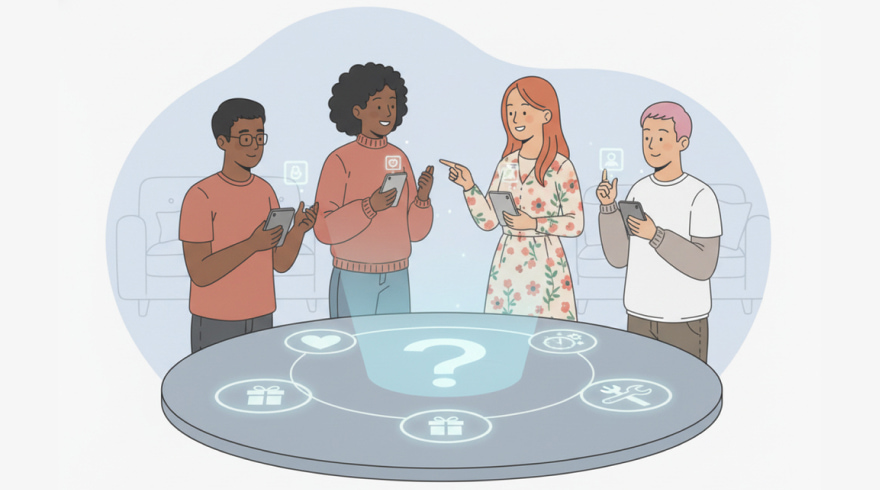
Why Understanding Affection Signals Changes Everything
Many readers start with a love language quiz to get a snapshot of their habits, and the brief reflection that follows often reveals surprising blind spots. If you just want a quick icebreaker, a love quiz can spark conversations that feel playful rather than clinical, which is especially helpful for new couples or friends. As patterns emerge, you’ll notice that your preferred channel for receiving affection isn’t always the one you use to express it, and that gap is where misfires usually occur. When you understand that discrepancy, you can intentionally translate your care into a form that lands, whether you’re texting, planning dates, or navigating busy seasons.

How the Five Love Languages Quiz Works
The framework identifies five primary ways people experience care: Words of Affirmation, Acts of Service, Receiving Gifts, Quality Time, and Physical Touch. While everyone uses all five at different times, most of us rely on one or two as our emotional “home base.” Assessments turn this abstract model into practical insight by ranking preferences, spotlighting secondary languages, and surfacing context shifts. For a broader look at patterns, a love languages quiz highlights which signals you notice fastest and where you might be missing cues. When you want a structured inventory, a Five Love Languages quiz maps preferences across all five modes with balanced item phrasing. For data-minded learners, a love language test quiz pairs statements with scaled choices to reveal nuance beyond a simple top score. Use the quick reference below to connect everyday behaviors with each language, then match those ideas to routines you already have.
| Language | What it looks like | Typical signals | Quick tip |
|---|---|---|---|
| Words of Affirmation | Thoughtful compliments, specific gratitude, encouraging notes | Asks for feedback, remembers phrases, lights up at praise | Replace generic “Good job” with precise, observable details |
| Acts of Service | Handling chores, arranging logistics, fixing small hassles | Mentions stress about tasks, appreciates follow-through | Do one unasked, high-impact task each week |
| Receiving Gifts | Meaningful tokens, symbolic mementos, small surprises | Keeps souvenirs, values thoughtful packaging | Maintain a running list of tiny, personal gift ideas |
| Quality Time | Undivided attention, shared hobbies, deep conversations | Notices distractions, asks for plans, values rituals | Schedule device-free micro-dates, even 15 minutes |
| Physical Touch | Hugs, hand-holding, cuddling, reassuring contact | Reaches for closeness, relaxes with touch | Create greeting and goodbye touch rituals |
As you interpret results, remember that context matters: stress, health, culture, and time of life can temporarily shift your preferences. Treat your profile as a living document rather than a fixed label so you can adapt gracefully as circumstances evolve.
- 1Speed up empathy by learning the exact signals that land for someone you care about.
- 2Reduce friction by replacing generic gestures with targeted, meaningful actions.
- 3Strengthen commitment by creating reliable rituals that withstand busy seasons.
- 4Improve conflict recovery by offering reassurance in the format that soothes fastest.
Clarity about how you give and receive care makes connection easier to build and maintain. You’ll communicate needs without defensiveness, and you’ll notice your partner’s bids for closeness before they become protests. People who enjoy personality tools often appreciate how a love test quiz clarifies boundaries and expectations in a format that feels accessible. If you’re guiding a partner, pointing them to your love language quiz can make sharing your results feel collaborative rather than prescriptive. To benchmark growth, a healthy relationship quiz helps you check trust, respect, and repair habits over time, complementing your language insights.

Love Language Quiz: Build Habits That Stick
Insights are only as valuable as the routines that follow them. Start by translating your top two languages into weekly, bite-sized behaviors you can actually sustain. For journaling, save a link to my love language quiz and retake it after major life changes to see how preferences evolve. When you meet someone new, suggesting a quiz love language moment can lower the stakes and make expectations explicit from the start. After a few weeks, retesting with a 5 Love Languages quiz shows whether new habits are landing in the way you intend, and that feedback loop keeps you responsive.

- 1Script requests using “so that” framing: “Could we plan a device-free walk so that I feel fully with you?”
- 2Bundle habits with existing routines: add a note to morning coffee, or a back rub to evening wind-down.
- 3Track impact in a shared doc with one-line reflections after each intentional gesture.
- 4Use calendar nudges for micro-rituals, then iterate based on what felt most nourishing.
Boost Your Connection
Different settings call for different applications of the same core insights. Partners preparing for milestones often use a 5 Love Languages quiz for couples session to align expectations about household labor, celebration styles, and repair rituals before stressors appear. Teams exploring appreciation rituals sometimes run a 5 Love Languages workplace quiz to improve recognition and reduce burnout by matching thank-yous to employee preferences.

Frequently Asked Questions
- How accurate are these assessments?
They are directionally reliable, especially when items are balanced and you answer based on typical weeks rather than ideal scenarios. Treat your profile as a starting hypothesis, then validate it through lived experience by noting which gestures produce the biggest emotional response. If results surprise you, run small experiments for two weeks and compare outcomes before drawing conclusions.
- Can I take one without paying?
Budget-conscious readers will be glad that a love language quiz free option still offers reliable guidance when you need a quick starting point. Free versions often cover the core distinctions effectively, and you can supplement them with reflection prompts, journaling, and partner conversations to deepen the insights.
- How often should I retake the assessment?
Plan to revisit your results when your life shifts, new jobs, parenthood, seasons of stress, or recovery. Frequency matters less than usefulness, so retest when feedback would help you decide how to invest energy. Use notes from previous attempts to spot emerging patterns and to retire gestures that no longer resonate.
- What if my partner and I have different top languages?
That’s common and solvable. Start with mutual curiosity and trade small, easy gestures that target each other’s primary preferences. Build a shared ritual calendar and check in weekly about what landed, then adjust. Over time, you’ll both develop fluency in one another’s dialects, which strengthens trust and smooths conflict.
- Is there a version suited for groups or classrooms?
For classrooms and teams, a free love language quiz makes it easy to test at scale and discuss results without pressure. Group debriefs work best when everyone shares one example of a gesture that genuinely resonates, followed by concrete plans to translate those insights into weekly routines.
The Latest News
-
![The Ultimate Guide to Understanding Love Communication Styles Through Engaging Quizzes]() The Ultimate Guide to Understanding Love Communication Styles Through Engaging Quizzes 5 Love Languages Quiz for Adults & Couples Get Started Why a Relationship Style Assessment Can Strengthen Bonds Every relationship thrives on translating intention into understanding, and that hinges on crisp, compassionate communication. When partners interpret signal...
The Ultimate Guide to Understanding Love Communication Styles Through Engaging Quizzes 5 Love Languages Quiz for Adults & Couples Get Started Why a Relationship Style Assessment Can Strengthen Bonds Every relationship thrives on translating intention into understanding, and that hinges on crisp, compassionate communication. When partners interpret signal... - 13 November, 2025
-
![Mastering Connection Through the Love‑Language Assessment]() Mastering Connection Through the Love‑Language Assessment 5 Love Languages Quiz for Adults & Couples Get Started What This Relationship Assessment Measures and Why It Matters Romantic and family bonds thrive when people feel understood, affirmed, and safe. Whether you are dating or married, the five love languages quiz o...
Mastering Connection Through the Love‑Language Assessment 5 Love Languages Quiz for Adults & Couples Get Started What This Relationship Assessment Measures and Why It Matters Romantic and family bonds thrive when people feel understood, affirmed, and safe. Whether you are dating or married, the five love languages quiz o... - 12 November, 2025
-
![The Ultimate Guide to Printable Love Language Quizzes for Couples, Families, and Teams]() The Ultimate Guide to Printable Love Language Quizzes for Couples, Families, and Teams 5 Love Languages Quiz for Adults & Couples Get Started What a Love Language Quiz Is and Why It Matters Healthy relationships thrive on clarity, empathy, and repeatable rituals that show care in ways a partner can actually feel. A love language quiz is a simple tool tha...
The Ultimate Guide to Printable Love Language Quizzes for Couples, Families, and Teams 5 Love Languages Quiz for Adults & Couples Get Started What a Love Language Quiz Is and Why It Matters Healthy relationships thrive on clarity, empathy, and repeatable rituals that show care in ways a partner can actually feel. A love language quiz is a simple tool tha... - 11 November, 2025
Please Note
This website (five-love-languages-quiz.com) is not an official representative, creator or developer of this application, or product. All the copyrighted materials belong to their respective owners. All the content on this website is used for educational and informative purposes only.



